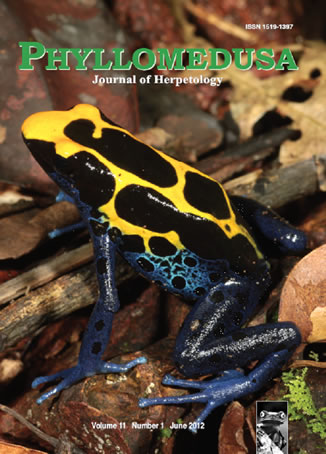Origin and clonal diversity of the parthenogenetic lizard Aspidoscelis rodecki (Squamata: Teiidae): chromosomal evidence.
DOI:
https://doi.org/10.11606/issn.2316-9079.v11i1p29-35Keywords:
chromosome fission, karyotype, parthenogenesis.Abstract
We analyzed the karyotypes of individuals of two different populations of Aspidoscelis rodecki to investigate the origin andchromosomal diversity of this unisexual lizard. The karyotype of A. rodecki has a diploid number of 50 chromosomes, and exhibits a marked structural heteromorphism. The unique arrangement seems to have originated by Todd´s fission after the origin of parthenogenesis (hybridization between A. angusticeps and A. deppii). This pattern was observed in two populations of the species, which is endemic to the Yucatan Peninsula.
Downloads
Download data is not yet available.
Downloads
Published
2012-06-18
Issue
Section
Articles
License
All material originally published in Phyllomedusa belongs to Escola Superior de Agricultura Luiz de Queiroz - Universidade de São Paulo. All contents are under a license of Creative Commons BY-NC-ND.How to Cite
Manríquez-Morán, N. L., & Méndez-de la Cruz, F. R. (2012). Origin and clonal diversity of the parthenogenetic lizard Aspidoscelis rodecki (Squamata: Teiidae): chromosomal evidence. Phyllomedusa: Journal of Herpetology, 11(1), 29-35. https://doi.org/10.11606/issn.2316-9079.v11i1p29-35



 Impact Factor (JCR): 0.400
Impact Factor (JCR): 0.400 CiteScore: 1.0
CiteScore: 1.0